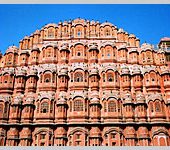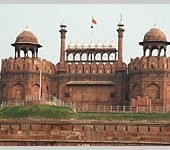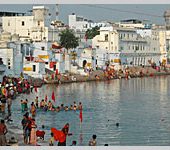Delhi is a city that bridges two different worlds. Old Delhi, once “the Capital of Islamic India,” is a labyrinth of narrow lanes lined with crumbling havelis and formidable mosques.
In contrast, the imperial city of New Delhi created by the British Raj is composed of spacious, tree-lined avenues and imposing government buildings. Delhi has been the seat of power for several rulers and many empires for about a millennium. Many a times the city was built, destroyed and then rebuilt here. Interestingly, a number of Delhi’s rulers played a dual role, first as destroyers and then as creators.
Delhi is the city of cities and its history goes back to over 3000 years. It has seen the rise and fall of several empires and rulers. Its inhabitants have experienced grandeur, battles and bloodshed, from time to time. Delhi also tells the stories of its kings, their manners, ideas, creations and lives. It is believed, that at the present site of Delhi, seven previous cities had been built, while some believe that the number was fifteen, if you take the minor settlements and fortifications, into account. Each ruler came and built a part of the city, giving it his name, and adding something new to it
General Information
Area: 1,483 sq km
Altitude: 293 m above sea level
Climet: 25º C to 46º C. ( summer )
3 to 4º C ( winter )
Languges: Hindi, English, Urdu and Punjabi
What To See
- Red Fort
- Qutub Minar
- Humayun’s Tomb
- Loutus Temple
- Dilli Haat
- India Gate
- Jantar Mantar
- Raj Ghat
- Akshardham Temple
- Birla Mandir
- Jama Masjid
- Purana Quila
Architecture
The architecture of Delhi has a rich heritage which includes the imperial Mughal architecture and also the gothic style of architecture incorporated by the Colonisers. Being the capital city, Delhi has been the seat of power for various dynasties and has thus witnessed an amalgamation of different cultures and tradition at various times in history which has resulted in the diverse architectural style of Delhi. Even post independence there are some exquisite architectural specimens that has being constructed in Delhi such as the brand new Akshardham temple built on the immaculate banks of river Yamuna
The first Muslim building to be constructed in Delhi was the Quwwat-ul-lslam Mosque, built in 1206 A.D. by Qutb-Ud-Din Aibak who started the Slave Dynasty. The construction was based on Islamic style of architecture but more proficient traditional Muslim construction techniques are seen in the tomb of Iltutmish and in Alai Darwaza. The Qutub complex is an excellent example of Indo- Islamic style of architecture. The buildings were constructed by destroying Hindu and Jain temples because depiction of animals and human figures on the wall is not permitted in Islam. There is not much decoration on the inside of the mosques in Delhi but the sturdy pillars, support true arches which look more archaic and are a step closer to genuine Islamic architecture. The tomb of Ghiyas-ud-din Tughlaq is an important architectural specimen of Delhi.
Quick Query








